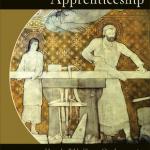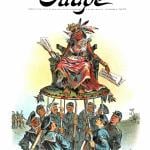Fleming Rutledge
Three Hours: Sermons for Good Friday
Grand Rapids: Eerdmans, 2019.
Available at Eerdmans and Koorong
By Laura Thierry
One of the most powerful holy week traditions still extant in many traditional church’s is that of the Good Friday afternoon vigil – three hours of readings, preaching, music, and silence. Congregants sit in a sanctuary stripped of all colour and life, contemplating the dark realities of sin and death and the pain-filled love in the person of Christ bringing restoration in its midst.
In Three Hours: Sermons for Good Friday Fleming Rutledge give readers a little taste of this Good Friday experience. This little book contains her sermons from Good Friday 2018; an experience that Rutledge describes as feeling ‘like a culmination of all my preaching over the past forty-five years’. She offers them in this volume in hope that they might help people ‘to understand more fully the nature of the sacrifice that God himself made in the person of his Son on Good Friday in Jerusalem two millennia ago.’ (vii).
The sermons move through the seven sayings of the cross, meditating on the themes of forgiveness, the promise of being with Christ in paradise, Jesus’ giving of his disciples to each other, the non-forsaking love of God for us in Christ, the wellspring of life thirsty that we might drink, and the need to prepare for our own death in Christ. This broad assortment of material is held together with stories that seek to connect with the audience, winning their trust, and thus gaining access to speak to their hearts.
A strength of Rutledge’s work is the example she sets of weaving a wide array of illustrations into her preaching. From hymns, to the New York Times, to Les Misérables and the Early Church Father’s, she demonstrates the richness of that comes from a preacher maintaining a healthy reservoir from which to illustrate and illuminate the truths of the Biblical text.
This book would serve as a good Lenten or Holy Week devotional. It could serve as an aid and example to those entrusted with the complex joy of Good Friday preaching. Or in Rutledge’s own words, it could be of service to any reader seeking ‘to further pursue the depths of the Scriptures concerning what Paul the Apostle called the heart of the Christian gospel: “Jesus Christ and him crucified.” (vii).
Laura Thierry a PhD student at Ridley College, researching medieval hagiography, Christology, and theology of the body.












